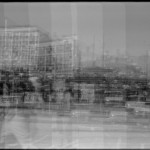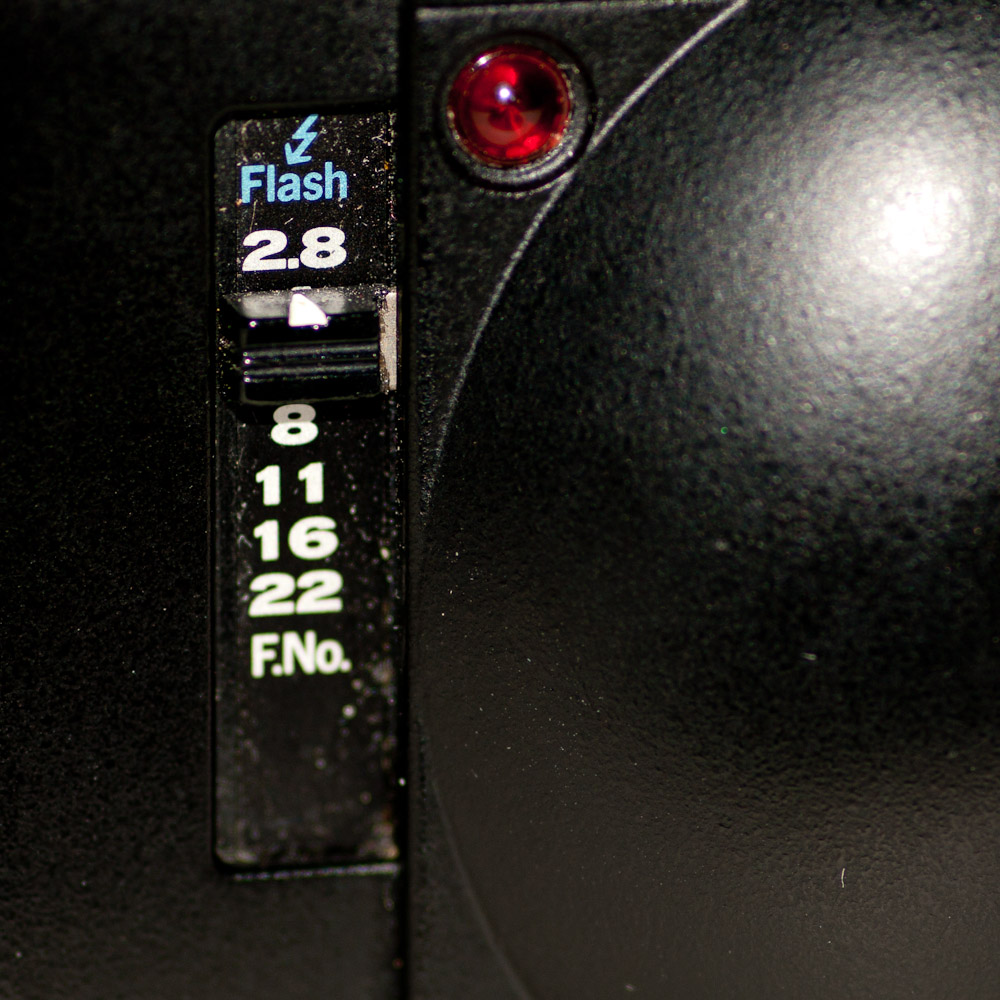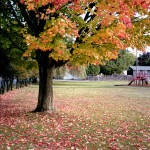Dec
31
2012
There is always talk on the Internet about camera sensor size so I thought it would be fun to illustrate different film sizes, and those little 110 slides are just so cute.
The Papa Bear chrome is from a 120 film in a medium format camera and is (56mm x 56mm or 3156 square mm )
The Goldylocks slide is from 35mm film (24mm x 36mm or 864 square mm)
The little baby slide is from 110 and is (13mm x 17mm or 221 square mm) This is very close to the size of 4/3″ sensors which are 13.5mm x 18mm


no comments | tags: film, slide | posted in Photography
Dec
29
2012
As much as I’ve always loved shooting slides the extra costs involved have limited my use of it. The choice will soon be even easier as the slide film available dwindles. Kodak of course has exited that business and Fuji has a limited selection. So almost every time I shoot using positive film in the back of my mind is that this may be the final time. In this case I shot Kodak E100Vs positive film. VS stands for vivid saturation so as you might expect the colours are vivid and saturated (That really was the best I could come up with) I had the film in my Pentax PZ1p for several months so there is a variety of scenery amongst the images. Despite the roll being 36 frames the shots are limited in number as my more personal ones are not included, but I am as pleased with those as well.
1 comment | tags: film, Kodak | posted in Photography, Processing
Dec
23
2012

I’ve used the Konica I for this previously because of it’s completely separate shutter and film advance as well as the way that the film advance moves in little click steps. Because the image is formed upside down and backwards on the film you need to pan from left to right to make a stitch where the image sides line up. I made no effort to actually align the images but allowed them to overlap and even did a few multiple exposures where I didn’t advance the film at all. I wouldn’t say I think the results were great but an interesting beginning. One of the limits of photography is the concept of a single image representing a moment of time. This is a break from that boundary and I believe is worthy of further exploration.
2 comments | tags: BW, film, Konica | posted in Photography
Dec
21
2012

Note the letter Q is silent. If you’ve stumbled across this information erroneously in an effort to find something meaningful on the Internet my apologies. So what is this oddity? I’m pleased you asked, no one else ever does. I’ve taken the lens from an APS film Konica Revio CL which has a 25mm focal length and a speed of 1:6.7 and adapted it to the Pentax Q mount. In order to do this I’ve duplicated the distance from the back of the lens to the film only now it’s to the sensor. During the disassembly I preserved the helical focus mechanism. I now turn it by hand using a small stud threaded into the decorative front of the lens. The lens itself is no great performer it’s 3 elements in three groups and doesn’t appear to have any coatings. I’ve found that despite my best efforts at focus most of my mid to far distance shots are on the soft side. This could partially be attributed to defraction caused by the 6.7 f-stop. Where this lens does perform well is at close distances and as a macro lens. The 25mm focal length on the Q yields a “35mm full frame” equivalent of 138mm, that coupled with the fact that the over-ridden focus allows you to get within inches of the subject, you have a large degree of magnification. 
Back to the Q being silent, not only is the Letter Q silent in the name of this lens the camera itself is completely silent as it now uses its electronic shutter. A note on focus. In order to focus reasonably well I’ve turned on focus peaking which was added to the Q with firmware upgrade 1.10, additionally I’ve set 4 times magnification on when manually focusing. The magnification is enacted by pressing OK on the rear control dial. To provide an idea of how small an object you can photograph with this lens here is a lilliputian mushroom in front of a pad lock key. 
For me I see using the Pentax Q as an opportunity to expand the boundaries of what I’m able to photograph, this is the reason I recently purchased the Pentax fisheye lens and am building lenses that do something I can’t do with any of my other gear. Next on my build list are a wide-angle and a telephoto.
3 comments | tags: Konica, lens, Pentax | posted in Cameras
Dec
19
2012

One thing you have to be careful about when handling these prints is to make sure they are dry and to keep the gunky negatives away from them. I allowed the negative to come back into contact with the print when I walked back to my vehicle and it resulted in a mess of developing fluid on the print. It did wipe off but stained the image which I have only partially obscured by darkening the blacks in the scan.
no comments | tags: Polaroid FP3000b | posted in Photography, Processing
Dec
14
2012
This may be the golden age of digital point and shoot cameras or it may be the amber ale age I’m still undecided. At the top of this heap of little mighty cameras is the new Sony RX1. It’s reached that peak by pairing a sensor equivalent in size to 35mm film with a fast 35mm focal length lens. After a wander in the photographic wilderness it seems Sony has conjured the spirit of Minolta once again, likely before they slip back into the dark and we wonder where they went. The stand out feature of the camera though is its price. I don’t doubt that the price is closely related to the developement and production costs but $2799 buys a lot of consumables (Beer and film). My tongue in cheek chart explains this as clearly as an unfiltered beer. I have no doubt that the camera will actually produce quality images in the hands of competent photographers but then a good photographer would no matter what the camera is. For disclosure one of my all time favourite cameras was the Sony DSC-V3 which I used for years and my primary SLR camera was a Minolta x700.

Other autofocus cameras with a full 35mm size frame and a 35mm lens that now cost less than 1% of a RX1 include; Pentax PC35AF, Canon AF35ML (OK it’s 40mm but it’s also f/1.9), Nikon L35AF, Olympus Stylus Epic. I’m sure there are more but I think I’ve made my point and shoot.
3 comments | tags: beer, camera, Digital, film, review, rx1, Sony | posted in Cameras, Photography
Dec
12
2012
I still have a few unpublished iPad paintings from our trip to Barkerville this summer. Sitting in the evenings with no distractions either reading or drawing was very relaxing. Yes the images are skewed towards nostalgia, but the entire experience of being in Barkerville BC is a form of it.
http://www.barkerville.ca/

1 comment | tags: iPad, Painting | posted in Painting
Dec
10
2012

A camera that’s more about style than function. I had hoped that its having a 35mm lens would put it on par with the lens of the Stylus Epic but that camera has an f2.8 maximum aperture vs the 3.5 of the LT-1. The epic is all around a better camera it just isn’t wrapped in a nice fake brown leather. And that’s all I have to say about that.
1 comment | tags: camera, film, olympus | posted in Cameras, Photography













































































